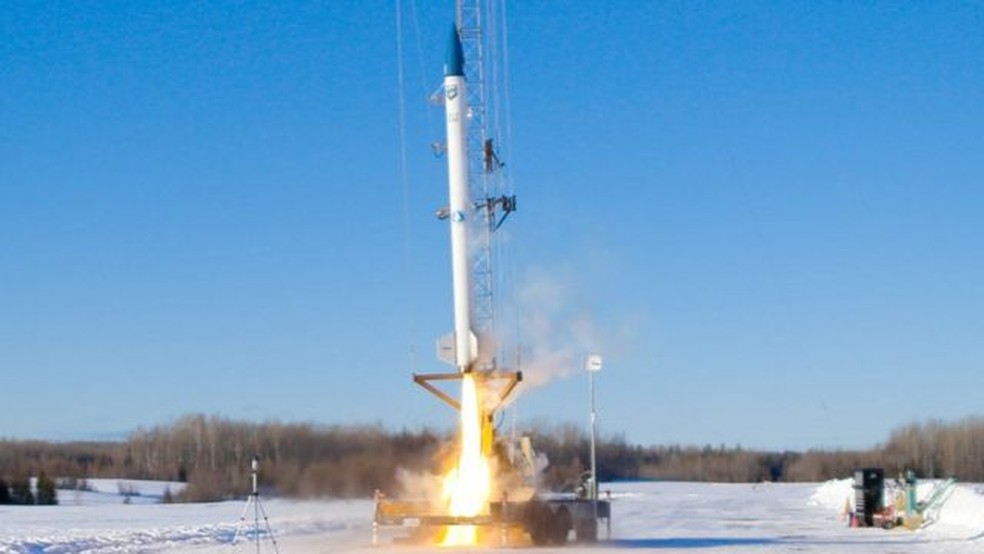
Stardust 1.0 became the first commercial launch of a biofuel-powered rocket.
Snow swirled and a biting wind caused temperatures to drop to several degrees below zero when Stardust 1.0 made its debut at a former military base in Maine, United States.
It was not a very glamorous debut for a rocket about to make history: it was tied to a trailer and pulled by a pickup truck along a runway that was already used by B-52 bombers in the Cold War.
From jet packs to flying bikes: vehicles that can change our routine
And almost nothing happened, as the sub-zero conditions wreaked havoc on the electronic system and the clouds got in the way.
But after several delays and, as the Sunday afternoon light (1/31) waned, the Stardust finally took off, becoming the first commercial launch of a biofuel rocket.
Sascha Deri, who invented biofuel, is cautious when it comes to the compound, but says it can be obtained from farms around the world. Founder and chief executive of bluShift Aerospace, he and his team spent more than six years refining the formula and designing a modular hybrid engine, which is also unique.
“We want to prove that a bio-derived fuel can serve just as well, perhaps even better in some cases, than traditional fuels for propelling rockets and payloads into space,” he says.
“In fact, it costs less per kilogram than traditional rocket fuel and is completely non-toxic. It is a carbon neutral fuel that is inherently better for our planet and more responsible.”
Stardust is a small rocket, only six meters long and 250 kilos. But because it is relatively inexpensive to fly and does not need the high-tech infrastructure used in larger rockets, it can help make space research accessible to more people. Students, researchers and companies will be able to carry out experiments and test products with greater control and frequency.
“At the moment, there are freight trains into space, like SpaceX and ULA, and there are buses into space, like medium-sized rockets,” says Deri. “They are taking thousands of pounds into space. But there is no space launch service that allows one or two payloads to go into space. There is no Uber for space. We want to be the Uber service for space.”
For the first launch, the payload included an experiment by high school students and tests with a metal alloy called nitinol, made by Kellogg Research Labs in Salem, United States.
Founder Joe Kellogg says nitinol is a material used in medical devices, such as stents. It is also used to protect rocket payloads from vibrations.
“We are heavily involved in space and trying to get into bigger missions, like the lunar missions and the Mars missions that are coming. Our long-term goal is to build entire nitinol rockets,” he says. “We think we can make them lighter and more energy efficient.”
While the Stardust flew just a mile in the sky before parachuting back to Earth, a second rocket will be suborbital, and a later version called Red Dwarf will enter polar orbit.
Polar orbits offer more exposure to land than equatorial orbits. And Maine, a state located in the northwestern US, is geographically suitable for such launches, which makes it attractive to the growing space satellite communications industry, says Terry Shehata, executive director of the Maine Space Grant Consortium, which is funded by the agency American space, NASA.
According to some estimates, small satellite launch services could move $ 69 billion (about $ 376 billion) in the next decade. BluShift alone hopes to create 40 new jobs in five years by launching tiny satellites known as cubosats.







